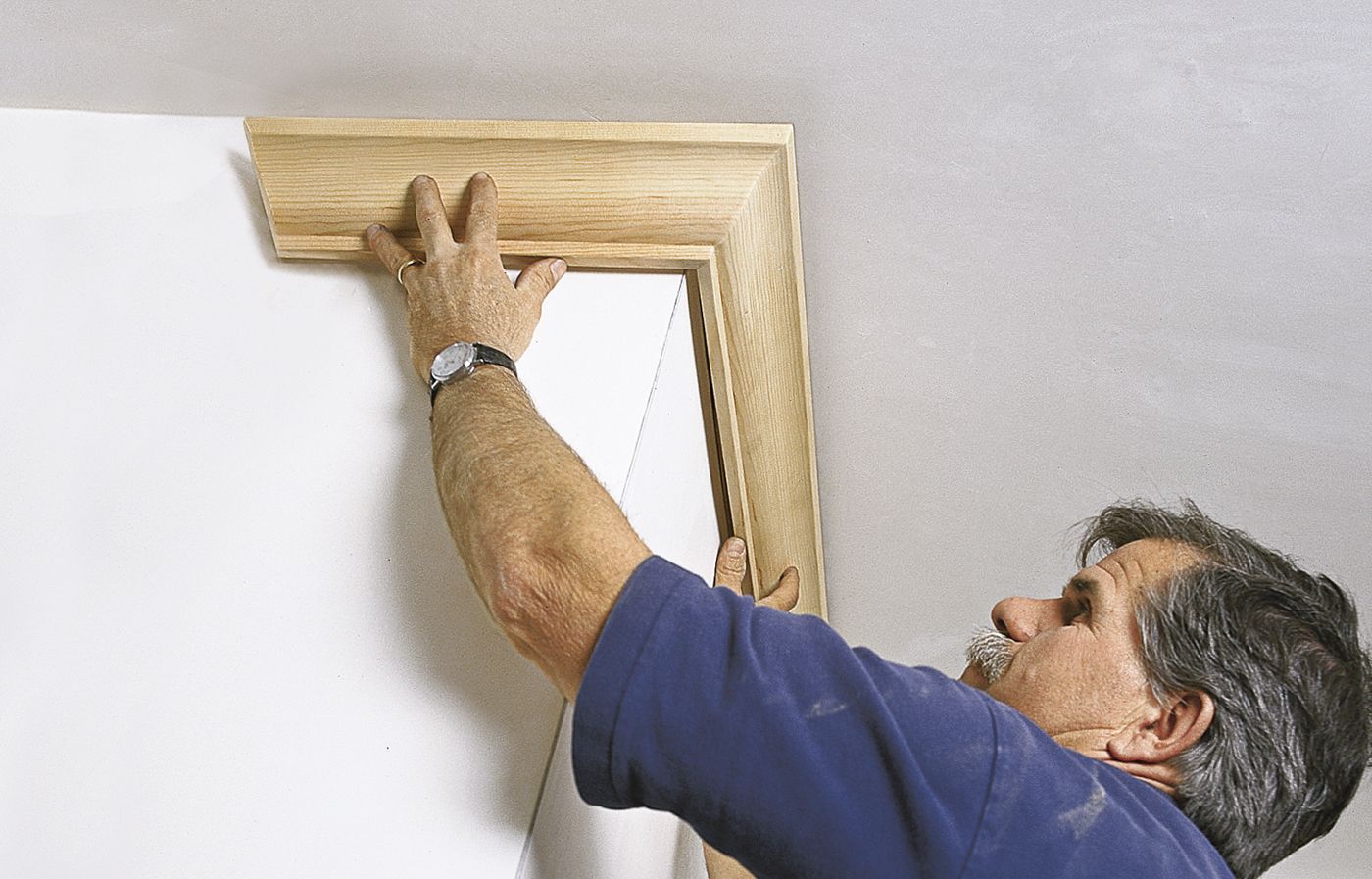We may be compensated if you purchase through links on our website. Our team is committed to delivering honest, objective, and independent reviews on home products and services.
Project details
Skill
Cost
Estimated Time
Crown molding is a classic architectural feature that can transform the look of a room, adding elegance and visual interest to the junction between walls and ceilings. The molding can be simple stock, like the single-piece crown installed here by This Old House general contractor Tom Silva, or elaborate pieces built up from separate lengths of various profiles. This guide will walk you through the process of installing crown molding, from planning and preparation to the final touches.
A Step-by-Step Guide to Putting in Crown Molding
Installing crown is only slightly more complicated than running baseboard. The variety of different joints and saw cuts, including a coped corner joint, an outside miter, a square cut, and a scarf joint, are best done with a coping saw and power miter saw. With practice, you should be able to make tight, long-lasting joints. Follow these steps for precise crown molding installation.
Step 1: Planning Your Crown Molding Project
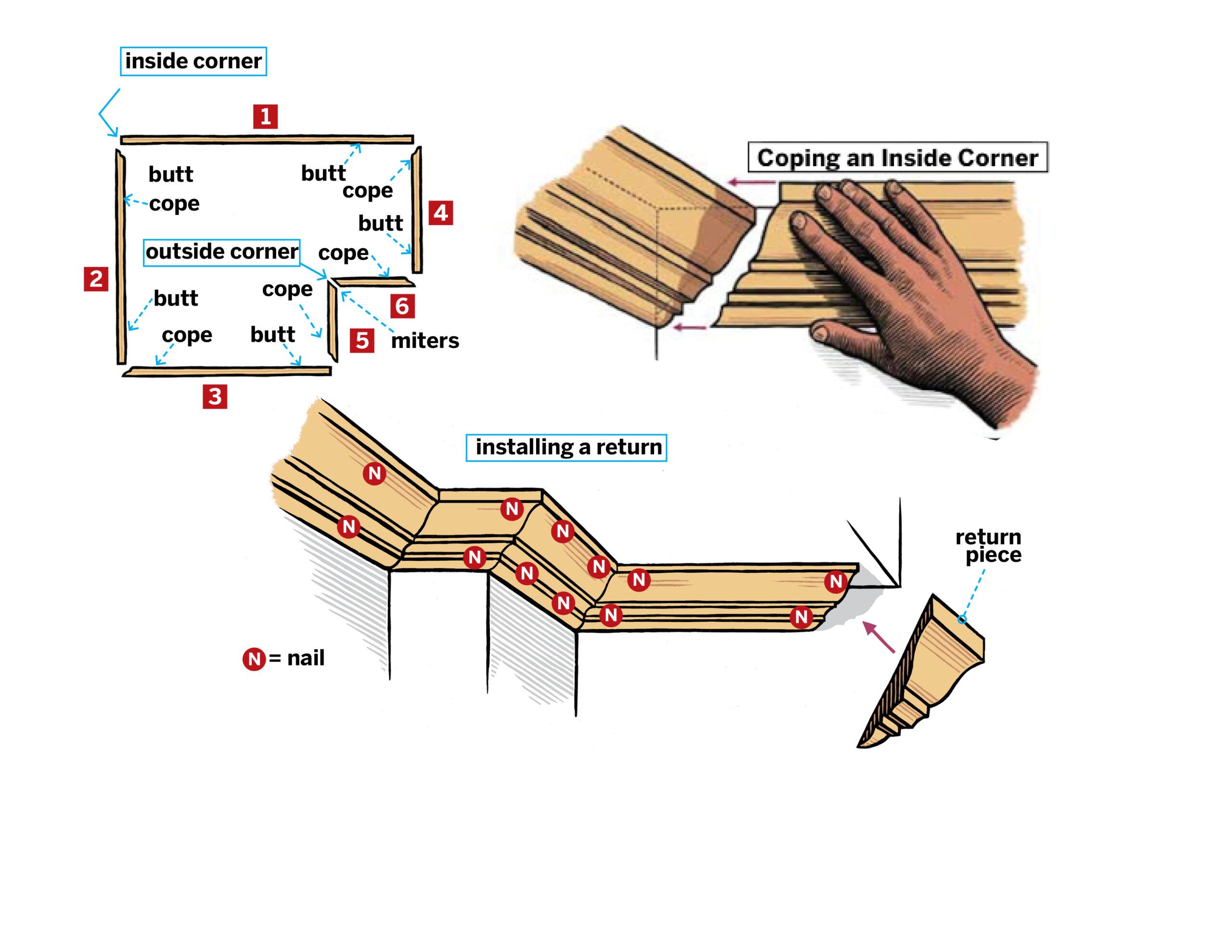
Plan your project carefully before you start installation. Start by measuring each wall in the room, rounding up to the nearest foot. Create a plain-view sketch of the room and mark these measurements on it. This will help you determine how much molding to purchase and plan your cuts effectively.
When buying molding, consider purchasing slightly longer pieces than necessary to account for any mistakes or adjustments. It’s also wise to number each piece of molding on the back, corresponding to the numbers on your sketch. This organization will streamline the installation process.
The first piece installed will be square-cut on each end. Each subsequent piece will typically have one end that is square cut and another end that is coped or mitered. In some cases, the end opposite the cope will also have to be mitered to help make an outside corner. When a length of molding is coped on one end, cut the coped end first. Once the coped end fits tightly, mark and cut the opposite end, whether it’s a miter or a square cut.
Step 2: Lay Out the Molding
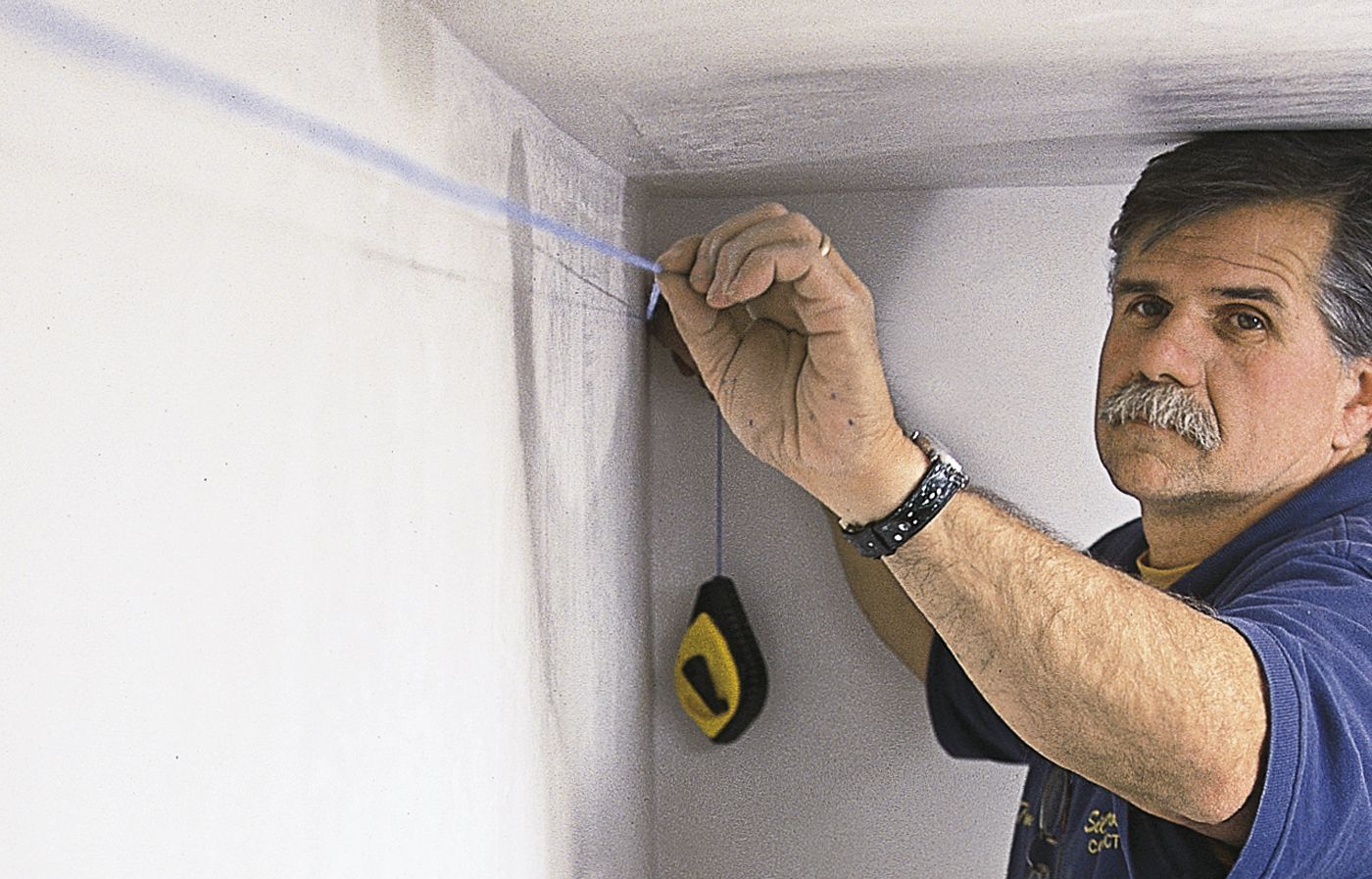
Begin by determining the order in which you’ll install each piece of molding around the room. Refer to your drawn plan and number each wall counterclockwise, starting with the wall opposite the door. To avoid having to cope both ends of the last piece, plan to install an outside corner last.
Next, use a scrap piece of molding to mark the position of its bottom edge at each inside and outside corner. Connect these marks with a chalk line to create your installation line, which will serve as your visual guide throughout the installation process. Locate and mark the positions of studs and joists along the wall, just below the installation line.
Step 3: Install the First Length of Crown Molding
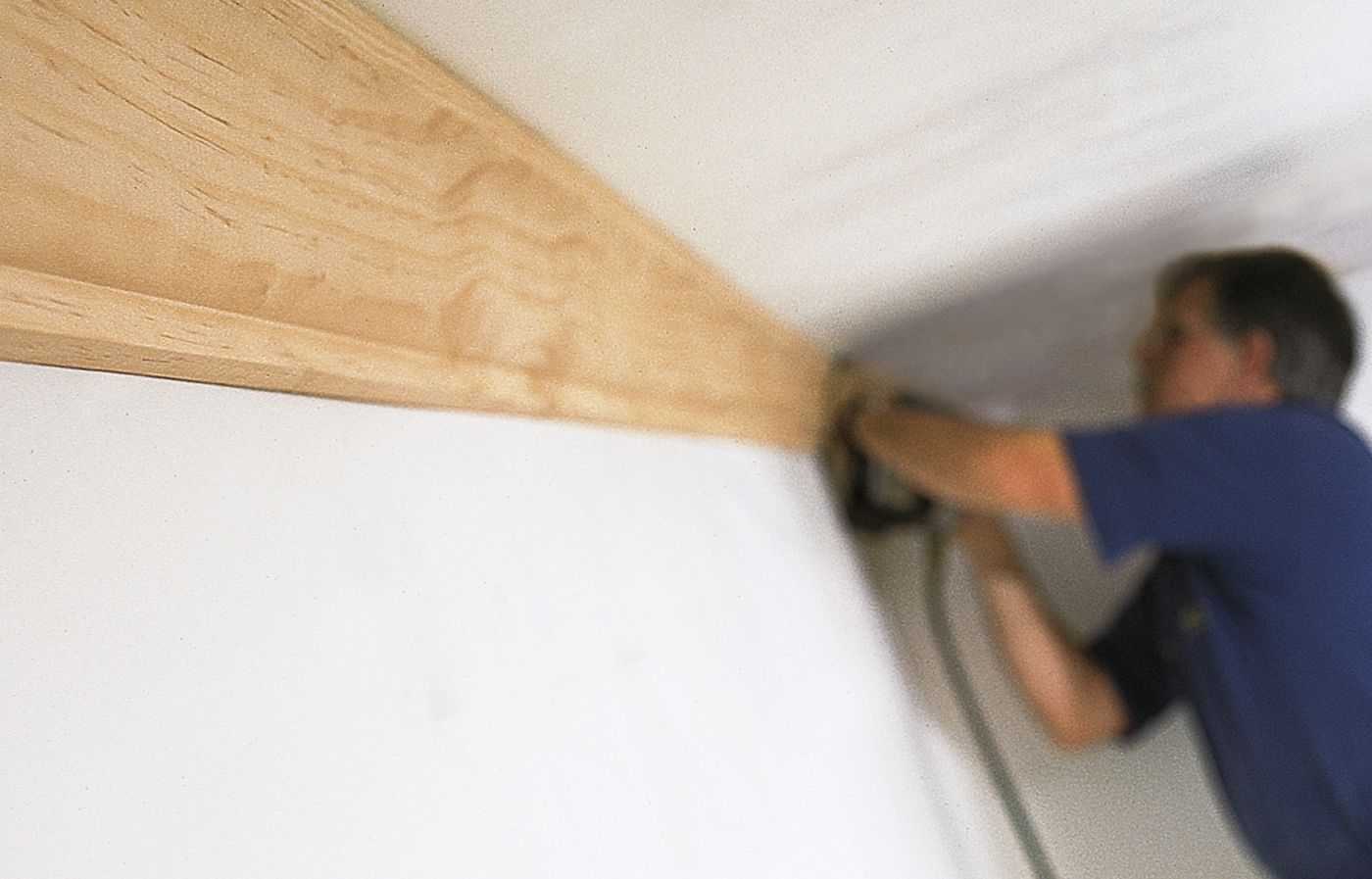
Measure the wall carefully and transfer this measurement to your first molding piece. Use a power miter saw to make square cuts at both ends.
Align the molding with the chalk line you created earlier. Starting from the center, use 8d finish nails to secure the molding to the studs and joists. Place the nails 1/2 inch from both the bottom and top edges of the molding. For areas near the ends of the piece, drill 1/16-inch pilot holes and use 4d or 6d finish nails.
If you need to join two pieces of molding along a wall, create a scarf joint centered over a stud for a nearly invisible seam. Set your saw to a 45-degree angle and make complementary cuts on the two pieces that will join. Secure the joint with 6d finish nails, once again drilling pilot holes to prevent splitting.
Step 4: Prep an Inside Corner Joint
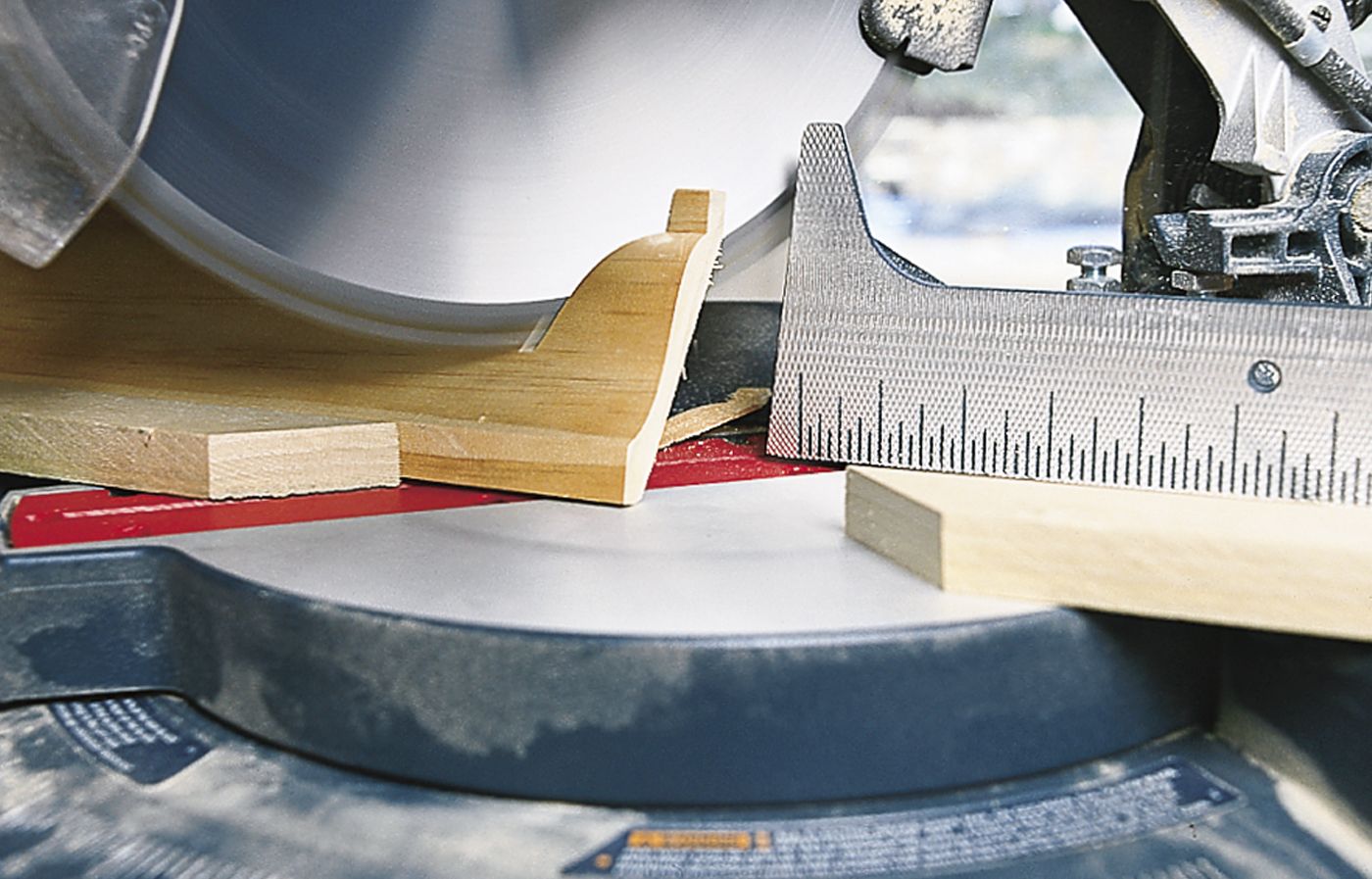
Coping is the process of cutting the end of a molding to mimic the profile milled into its face. These cuts are necessary where one piece of crown molding meets another at an inside corner.
To begin, place a length of crown molding upside down on your miter saw. The bottom edge (the part that will sit against the wall) should rest against the fence, while the top edge (the part that will meet the ceiling) should be on the table.
Set your saw to a 45-degree angle. For a left-side coped corner, swing the saw to the left; for a right-side corner, swing it to the right. When you make the cut, ensure that the long point of the miter is on the back of the molding, not the face.
Step 5: Highlight Cut Line With Pencil
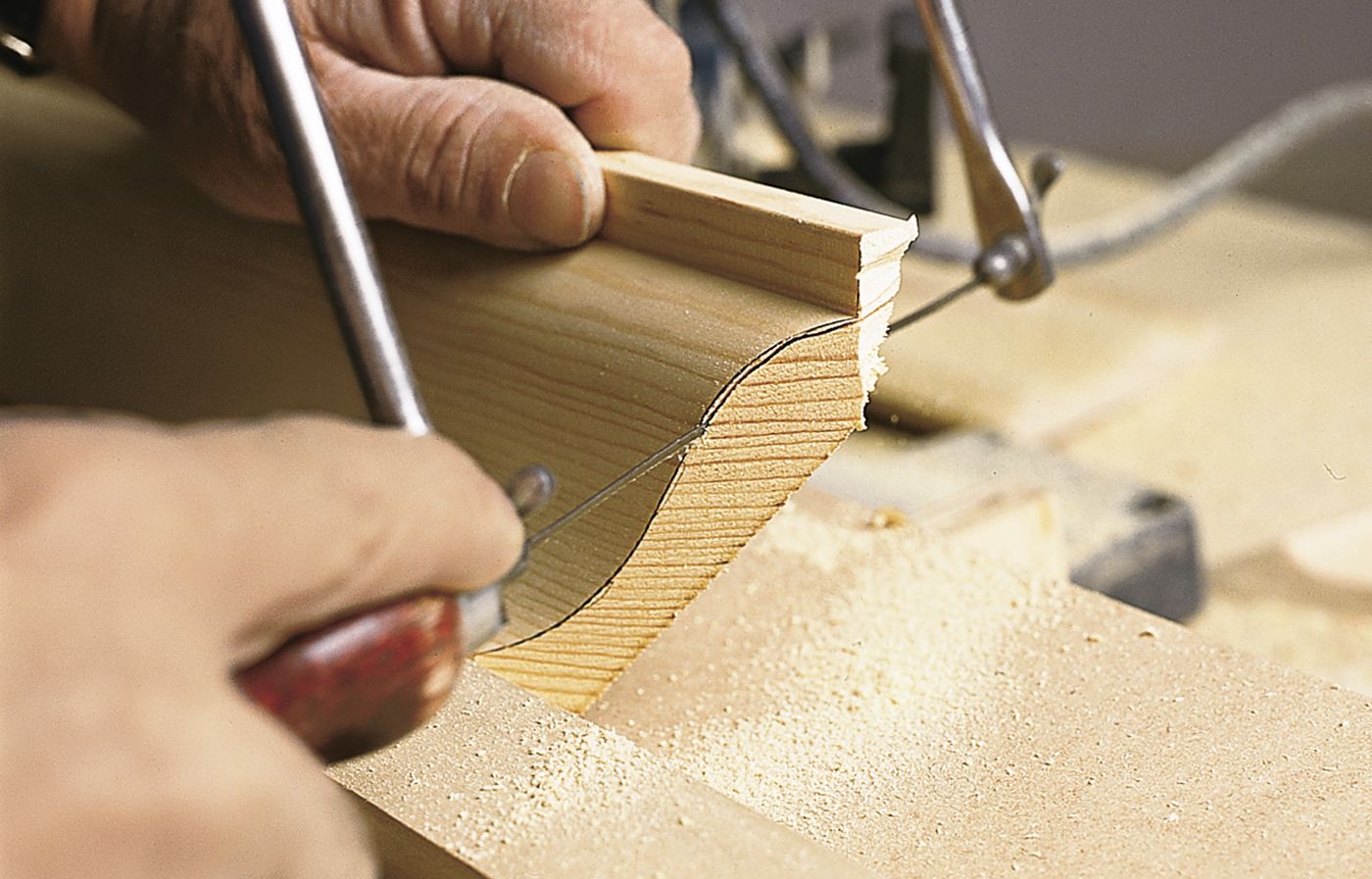
After making the miter cut, use a pencil to clearly mark the edge on the face of the cut. This highlighted line will serve as your guide when using the coping saw, making it easier to follow the molding’s profile accurately.
Step 6: Install an Inside Corner Joint
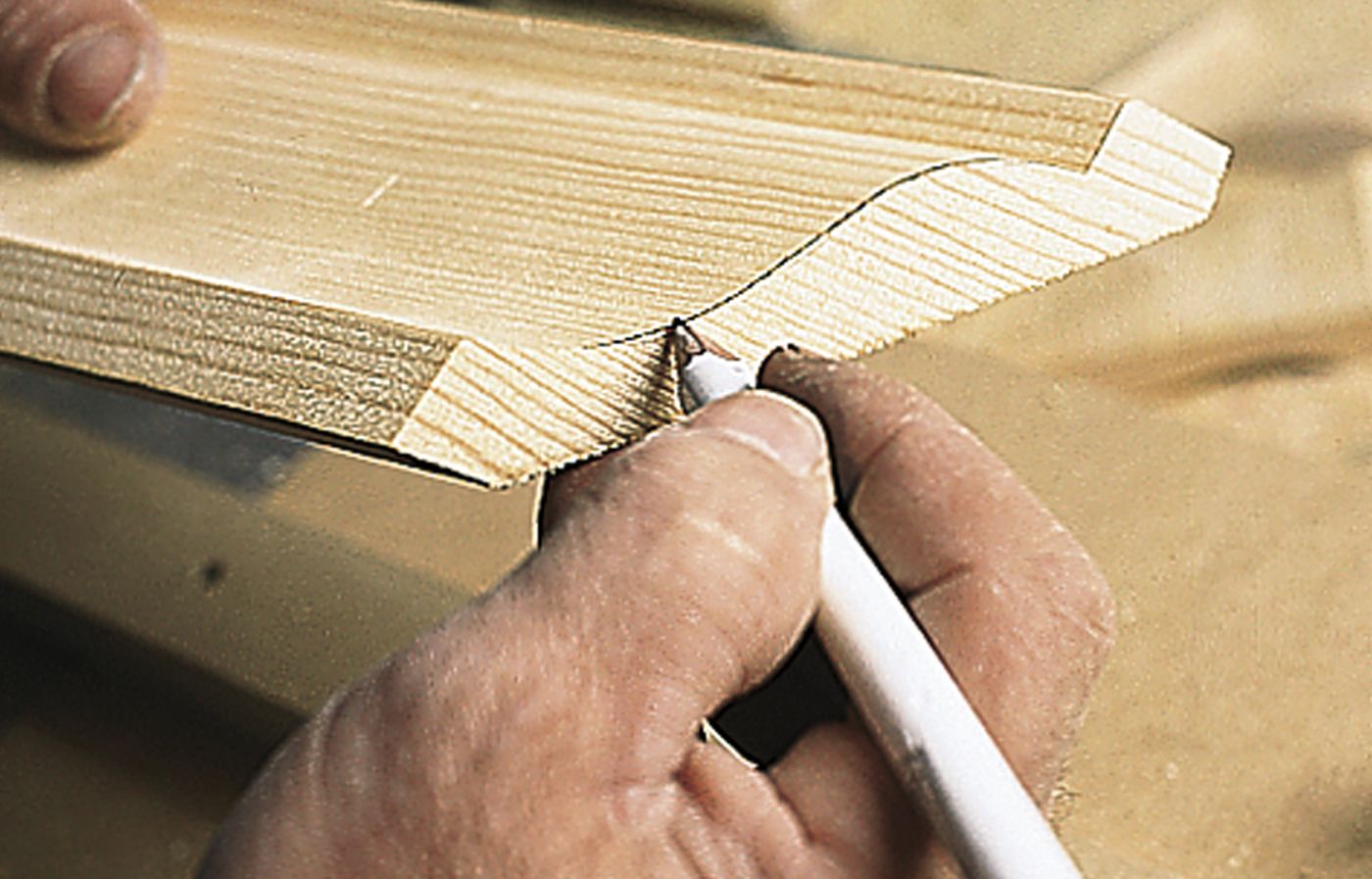
To create a snug-fitting joint, use a coping saw held at a slight 5-degree angle away from the face of the molding. Carefully cut along the pencil-marked edge, following the molding’s profile.
Test the fit by bringing the piece to the wall and sliding it into place. If necessary, use a wood rasp or utility knife to fine-tune the fit. Ensuring a tight joint at this stage reduces the need for excessive caulking or filler later.
Before attaching the piece to the wall, determine whether its uncut end will meet an inside or outside corner. For an inside corner, measure from the top edge of the first installed piece to this corner. Transfer this measurement to the coped molding, mark it, and make a square cut using the miter saw.
Step 7: Mock Up an Outside Corner
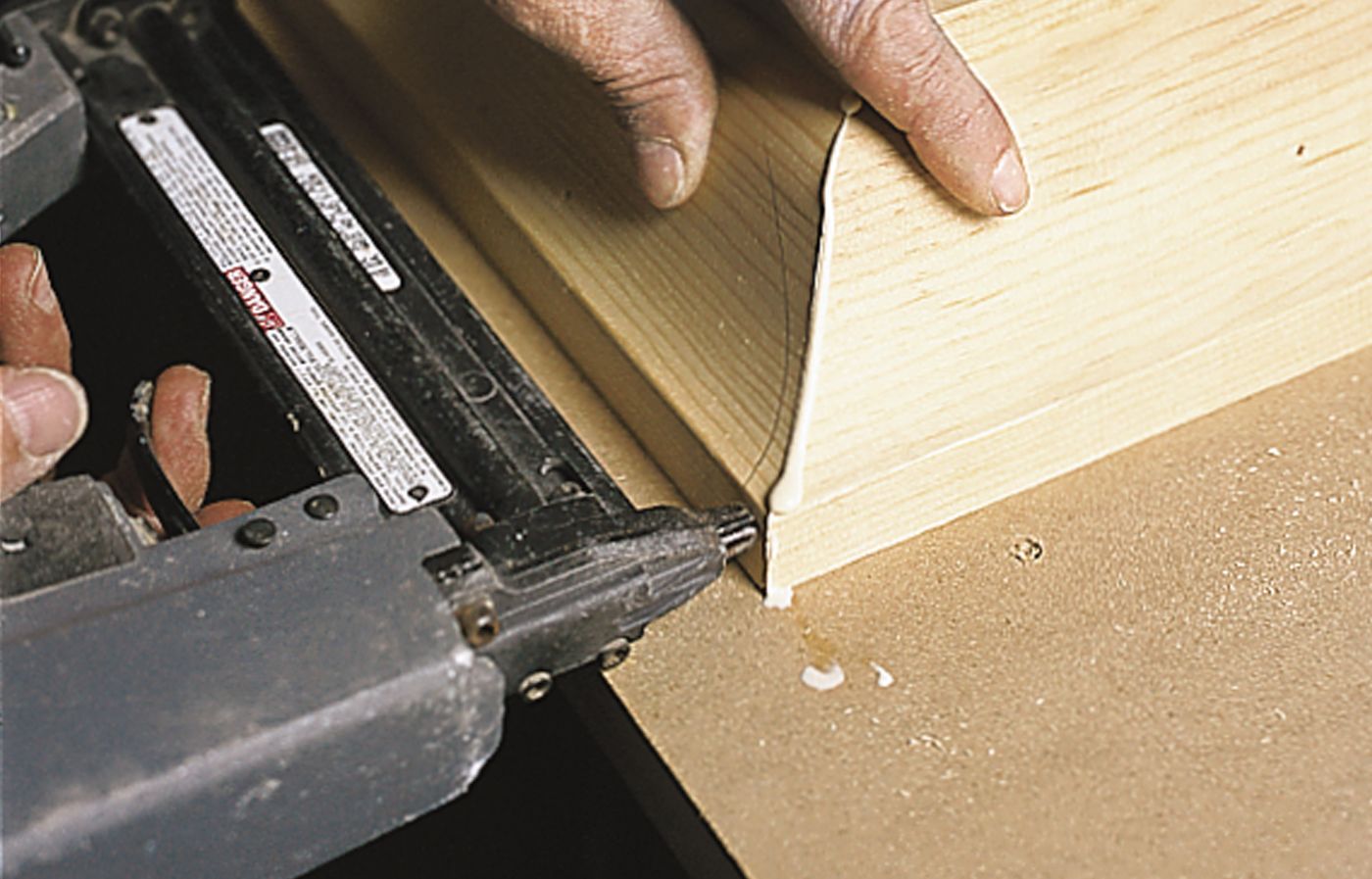
To make installing outside corners easier, create a mock-up using two 12-inch-long molding scraps. Make an outside miter cut on one piece, then repeat the process for the second piece, rotating the saw blade to the opposite 45-degree angle. Glue and nail the pieces together at the ends.
Hold this mock-up in place at the corner and mark the ceiling where the two pieces meet. Measure from the top edge of the first installed piece to this ceiling mark. Transfer this measurement to your coped length of molding and make the appropriate cut. This mock-up process helps you visualize the final installation and make any necessary adjustments.
Step 8: Install an Outside Corner
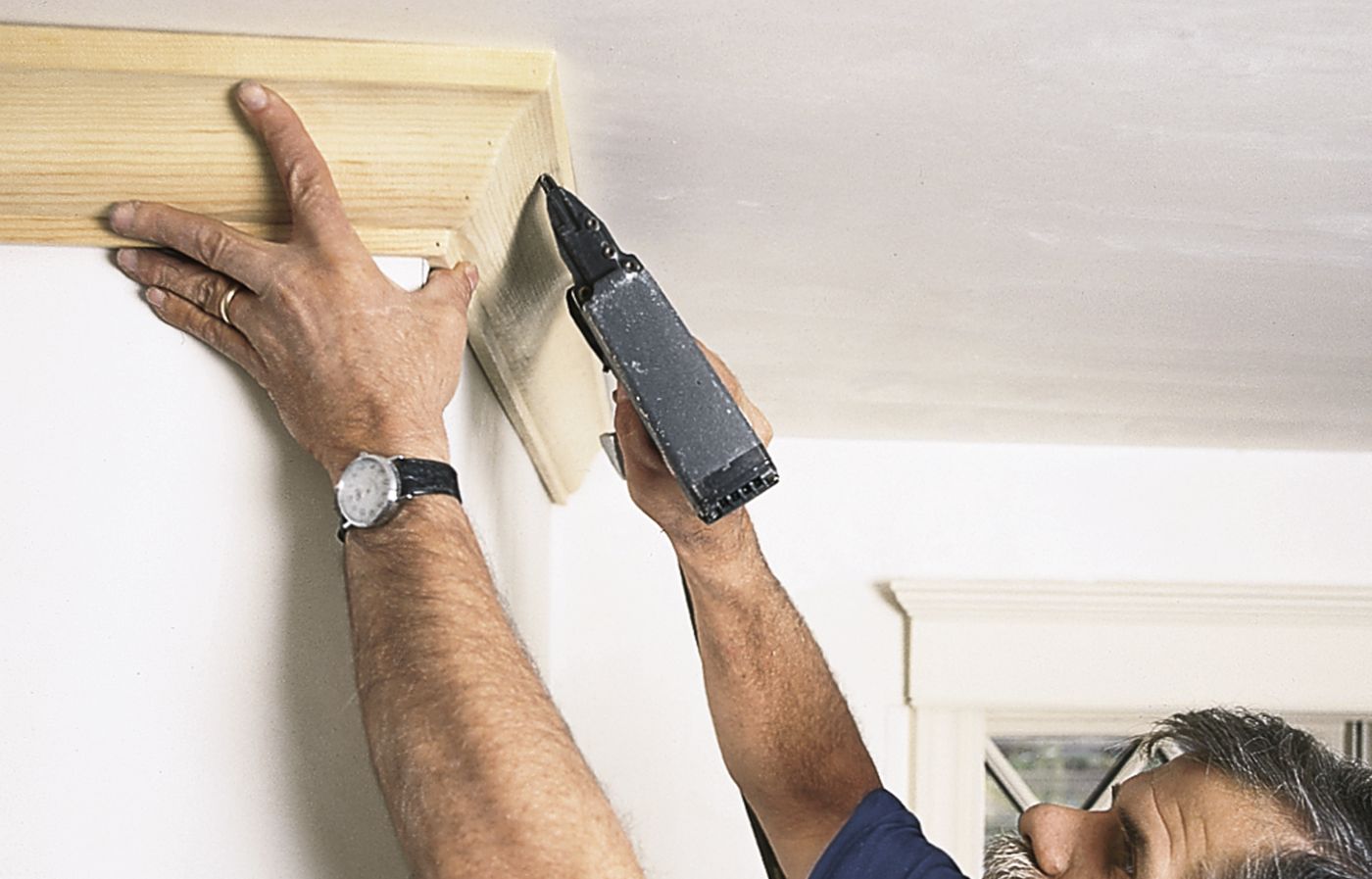
For an outside corner that will meet an inside corner not requiring a coped end, repeat the measuring and cutting sequence to complete the outside corner. Ensure you rotate the saw blade to the opposite 45-degree angle for the second piece. Measure and cut the butt end as needed.
Align the piece on the wall, apply glue to the mitered surfaces, and nail the molding into place. Secure the corners together as you did with the mock-up. If the other side of the corner requires a coped end, complete the coping process first (Steps 4–6), then finish the outside corner as described.
As you work your way around the room, continue coping inside corners and mitering outside corners.
Step 9: Cut and Fasten a Return
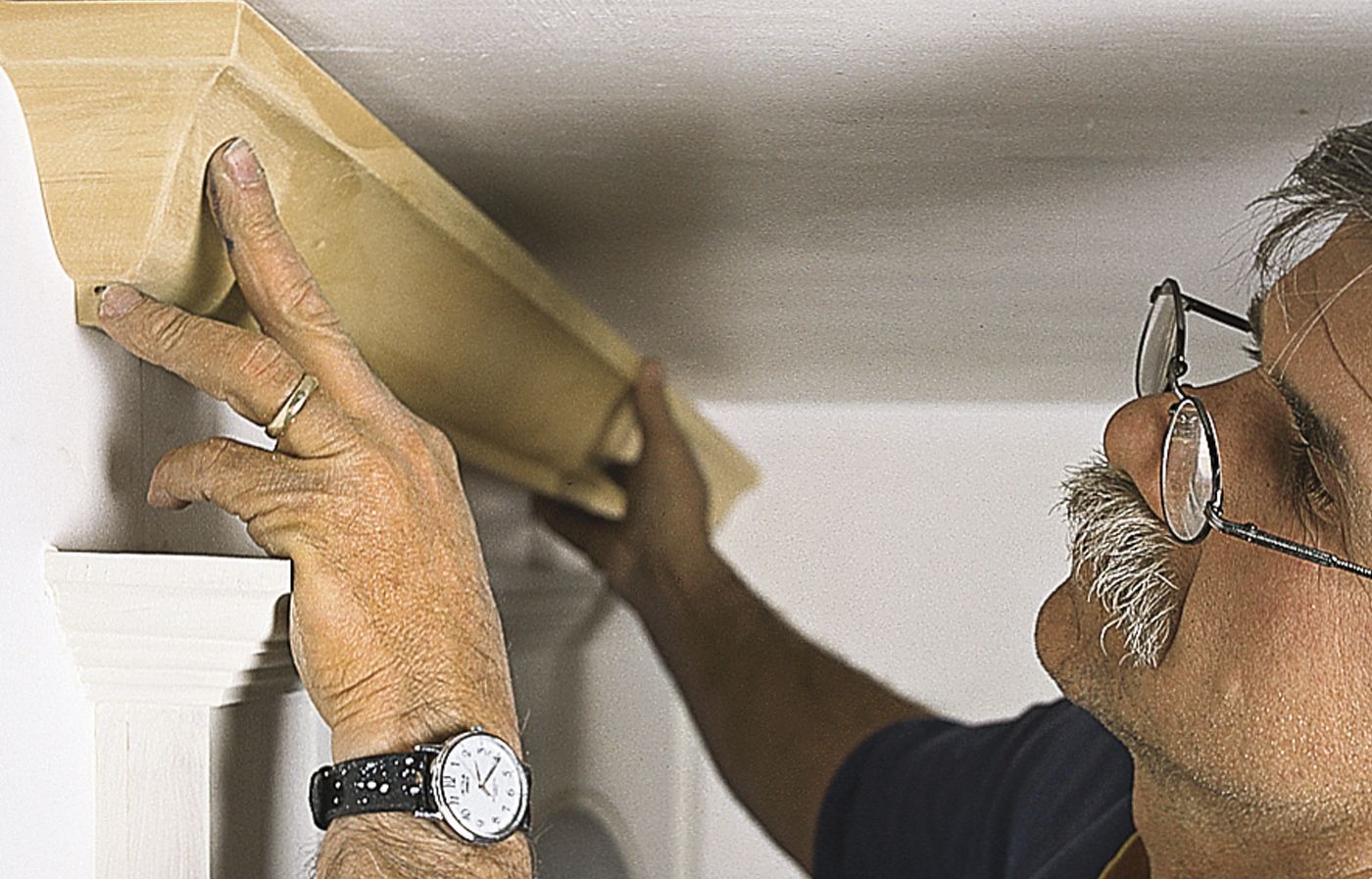
In situations where the ceiling height changes and the molding must end mid-wall, cap it with a return. Start by making an outside miter cut at the point where the ceiling height changes. Take a molding scrap at least a foot long and cut an outside miter on its end.
To create the wedge-shaped cap, set the saw to 90 degrees and hold the scrap with its back flat on the saw table. Cut the piece so that it comes to a point at the bottom edge. To avoid splitting this small piece, use glue rather than nails to secure it in place.
Additional Tips for Crown Molding Installation
Here are some additional tips to ensure a successful crown molding installation:
- Always wear safety glasses and hearing protection when using power tools.
- Practice cutting scrap pieces before making cuts on your actual molding.
- Paint or stain your molding before installation to make the finishing process easier.
- Consider using a nail gun for faster and more precise nailing, especially on longer pieces.
- Use wood filler to cover nail holes and caulk to fill any gaps between the molding and the wall or ceiling.
Troubleshooting Common Issues
Even experienced do-it-yourselfers can encounter challenges when installing crown molding. Here are some common issues and how to address them.
- Gaps at joints: Use wood filler or caulk to fill small gaps. For larger gaps, you may need to re-cut and replace the piece.
- Molding not sitting flush: Check for unevenness in the wall or ceiling and use shims if necessary.
- Splitting wood when nailing: Always pre-drill holes, especially near the ends of the molding.
